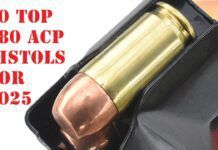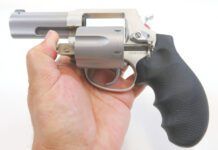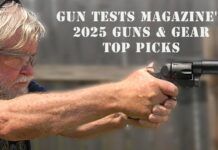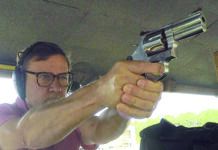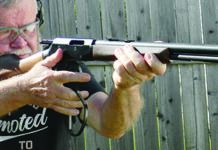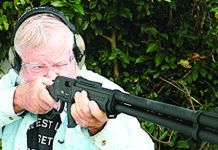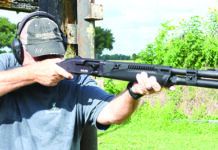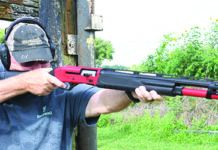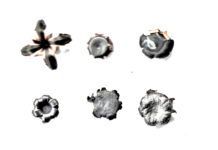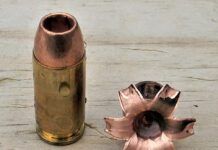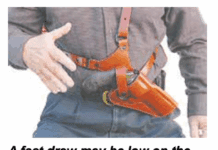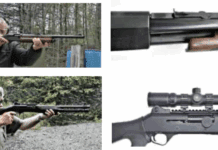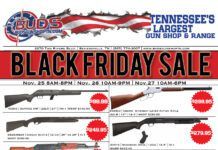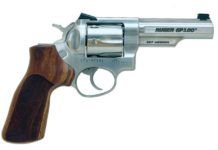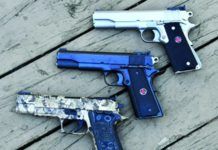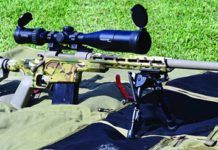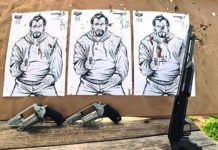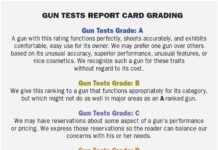Gun Rights Wish List Bogs Down
We're already into the second month of the year, and 2018 is looking like 2017 regarding gun legislation. To see how far gun legislation advanced, I checked the January 2017 "Downrange" column, which had a wish list of efforts for gun owners — and saw that not much is moving, or what is moving continues at a glacial pace.
Championing a Ruger GP100
I just read your review of the Ruger GP100 Match Champion compared to the Smith 686. I know the review is three years old, but I hope my experience will be useful to other readers. I dithered over purchasing the 686 or the GP100 for months. I dry-fired every one I could find of each. Every single 686 in single action had a nearly perfect trigger pull off the shelf. The GP100s ranged from as good as the 686 to almost as good.
NICS Gets Attention, Good and Bad
The FBI's National Instant Criminal Background Check System (NICS) has been getting a lot of attention recently. If you'll recall, a court-martialed Air Force veteran purchased a rifle illegally and used it to kill 25 people inside a Sutherland Springs, Texas, church on Nov. 5. Turns out that the Air Force had not provided the FBI with details of the court martial. The Air Force also missed the shooter's initial arrest on domestic-abuse charges and his 2012 escape from a New Mexico behavioral health facility. Had NICS been properly updated, it's likely the system would have blocked the sale of the murder weapon to the shooter.
Hurrah for Slide-Racking Effort!
Todd, thank you very much for starting to include the slide-racking forces on your pistol tests. As I age, I am starting to develop arthritis in my thumbs and find that it is becoming hard or impossible to rack the slides on some pistols. For example, I have no problem racking the slide on my 1911, CZ 75, TCP, and Buckmark; but I could not comfortably rack the slide on my buddy's SIG. I still enjoy shooting pistols and hope to be able to do it for a few years before I have to switch to revolvers. Slide-racking force will definitely be one of my considerations when I consider purchasing pistols in the future. Keep up the good work!
Giving a Firearm as a Gift? Some Reminders from Gun Tests
The first question you have to ask is whether the intended recipient can legally own the firearm where he or she lives. With more than 20,000 different gun laws on the books, even the kinds of firearms that law-abiding citizens can own vary from place to place; for example, juveniles (under age 18), generally speaking, are precluded by law from possessing a handgun.
We Wouldn’t Buy Ruger or Howa Precision Rifles
When a firearm leaves the factory in a condition that precludes the buyer from using it as designed, that firearm deserves an "F." I believe it is acceptable to point out whether the problem is severe or an easy fix. However, the evaluation needs to stress that the firearm should have never left the factory in the condition tested. Personally, regardless of the grades given, I would not buy the Ruger or the Howa. Keep up the good work.
Grading the News
The New York Post reports that gun ownership in New York City (such as it is) could soon come with a warning - it's dangerous to the gun-owner's health. The City Council Public Safety Committee voted 6-1 Monday to require the NYPD to hand out written warnings about the risks of gun ownership to new applicants for firearm permits.
After Las Vegas
The first dreadful pieces of news coming out of Las Vegas on Sunday, October 1, coalesced into yawning horror that would grip a nation and sadden our world. Fifty-nine people were dead and hundreds injured at the hands of a lone sniper, who had secreted more than 20 rifles and handguns on the 32nd floor of the Mandalay Bay Resort and Casino. From that perch, the shooter had uninterrupted views of the Las Vegas Strip and the Route 91 Harvest Festival, a three-day country music concert, that kicked off at the Las Vegas Village, a venue across the Strip from the Luxor hotel and the Mandalay Bay Resort and Casino.
A Special Revolver for 45 LC?
Editor: I read with interest your article about .410-bore ammo tests. Your pictures clearly show that the 45 Colt expands far better than the 45 ACP! The gun manufacturers are asleep. They should make a 45 Long Colt revolver with 4-,6-, and 8-inch barrels. Bet this would rival the 357 Magnum in knockdown power without the recoil!
Another Disaster, Another Column
In the November 2005 "Downrange" column, I wrote to you after the arrival of Category 5 Hurricane Rita, discussing what our go-to guns were when we were considering bugging out of Houston. Now we're dealing with the remnants of Category 4 Hurricane Harvey, and the water is Biblically high. Our gun-column angle for this disaster are the legal ramifications of moving guns during emergencies.
Grading the Grades, Part II
Dear Todd: I sincerely hope you don't change the grading scale to what is effectively pass/fail. Larry brings up an interesting point that would provide one way of comparing future evaluations, although comparing future with present and past scales could be unduly confusing. Personally, I thought the old scale was just fine, though I have adjusted to the new one.
Surplus 1911s Might Be Back
The U.S. House of Representatives has passed H.R. 2810, the National Defense Authorization Act (NDAA) for Fiscal Year 2018. Included in the bill is a provision that would make U.S. Army surplus 1911 45 ACP pistols available to the American public through the Civilian Marksmanship program (CMP), according to an NRA release. In November 2015, then-President Obama signed the NDAA for Fiscal Year 2016 into law with language that authorized the Secretary of Defense to transfer 1911s no longer in service to the CMP for public sale. That language made the transfers subject to the Secretary's discretion and capped them at 10,000 per year. Unsurprisingly, no actual transfers were made under the program while Obama remained in the White House.


